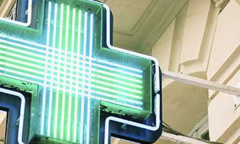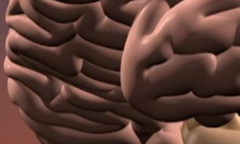About anti-seizure medication
For most people with epilepsy, the main type of treatment is anti-seizure medication (ASM), previously called anti-epileptic drugs or AEDs. Up to 70% (7 in 10) of people could stop having seizures with the right medication.
What is anti-seizure medication and what does it do?
ASM is a type of medication that aims to stop seizures from happening. It does not stop a seizure once it has started and it cannot cure epilepsy. Some medications are taken as a ‘course of treatment’ to cure a condition, for example, taking a course of antibiotics for an infection. ASM is different: it is a preventative medication taken every day to try and stop seizures from happening. It does this by reducing the excessive electrical activity in the brain that causes seizures. The way it works is not completely understood, and it is likely that different ASMs work in slightly different ways.
What is the aim of treatment with ASM?
The aim of treatment is ‘optimal therapy’. This means taking the fewest types of ASMs, at the lowest dose, in order to get the best seizure control possible, with the fewest side effects.
If optimal therapy cannot be found with one particular ASM there are usually several others that can be tried alone or combined.
When is treatment usually started?
Epilepsy is the tendency to have repeated seizures that start in the brain. Treatment is usually only considered after a diagnosis of epilepsy has been made. This is usually after someone has had repeated seizures.
In some rare situations treatment might be considered straightaway, after just a single seizure. This is usually only when a doctor thinks that it is very likely that you will have further seizures.
Who will be involved in my epilepsy care?
If you or your child have been diagnosed with epilepsy, it is likely that you will have seen a specialist – a neurologist for adults, or a paediatrician or paediatric neurologist for children. The specialist should have expertise in epilepsy. You may already have discussed treatment options with them. They will usually prescribe your ASM and arrange follow-up appointments to see how you are getting on.
The day-to-day management of your epilepsy might be under the care of your GP. For example, they might write your prescriptions. They should also have a copy of your treatment plan (see below).
You might also see an epilepsy specialist nurse (ESN). ESNs work alongside the specialist and GP to help you manage your epilepsy. Not all hospitals have an ESN but you can ask about this at your local hospital.In the longer term, if your seizures become controlled, you might only see your GP to review your epilepsy each year.
How is ASM chosen?
There are about 30 ASMs and each has a particular type or types of seizures that it works for. The choice of ASM firstly depends on the type of seizures you have, and which ASM works for these seizures.
The National Institute for Health and Care Excellence (NICE) has recommendations about which ASMs should be used for different types of epilepsy and seizures.
When an ASM is chosen, your specialist will take into account any other conditions you have, or medication you take. As you may be on ASM for a number of years, they will consider not just what is right for you now but also for the future. For example, when a girl is first prescribed ASM they will think about when she becomes an adult and may want to start a family, as some ASMs can affect an unborn baby (see below).
Although ASM recommendations are largely the same for men, women and children, there are some reasons why a particular ASM might be chosen or avoided for a particular person. This may be due to possible side effects (see below).
How is treatment started?
You are entitled to free prescriptions for your ASM and any other prescribed medication. See our page on available help for more information.
Treatment is usually started with a ‘first line’ ASM. This is an ASM that is tried first and taken on its own, sometimes called monotherapy. Once the most appropriate ASM for you has been identified and discussed with you, you will usually start on a very low dose. This helps your body get used to the medication, and makes side effects less likely. The dose is then increased slowly over a number of weeks until it stops your seizures. The right dose for you may be different to what is right for someone else. This is sometimes referred to as your ‘individual therapeutic concentration’. Therapeutic drug monitoring (TDM) uses blood levels to individualise epilepsy treatment to get the best seizure control with the least side effects. TDM can be very useful when starting medication, although not everyone is offered TDM. Visit our page on monitoring your medication.
How the body absorbs, uses and removes medication changes with age. For children, ASM doses are based on their body weight and so the dose increases as they get older (up to around 12 years of age). For adults, doses are not based on body weight.
For most people, once the right ASM for them is found, it will stop their seizures. Although for some people it can take time to get this right, the aim is to stop your seizures by just taking one ASM.
However, if your seizures do not stop when the dose is increased, or you start to have side effects, you may want to talk to your doctor about changing to a different ASM.
Because different ASMs work in different ways, if one does not control your seizures, it doesn’t mean that other ASMs won’t work. If you change from one ASM to another, the second ASM is usually added and slowly increased to a dose which is likely to work, and the original drug is slowly reduced.
If your seizures are not controlled with a single ASM you may take a combination of ASMs. This is called polytherapy. Some ASMs added to a first line ASM are called ‘second line’ ASMs. This is slightly different for children because ASMs are not split into first and second line for treating children age 12 and under.
Some people continue to have seizures despite taking ASM. In this case they may continue to take ASM to reduce their seizures as much as possible and consider trying other types of treatment.
Side effects and interactions
As with all medications, ASM can cause side effects, and possible side effects vary from one ASM to another. Whether you will have side effects or not depends on how you react to the drug (as people can respond differently to the same drug). How important side effects are depends on how important they are to you.
Information about side effects is included in the patient information leaflet (PIL) that comes with the packaging for each medication. The list of side effects can be long and off-putting. But listed side effects are only possible side effects. They do not always happen.
They are often listed by how frequently they occur, such as ‘common’ and ‘rare’. These terms are the same for all drugs and they show how likely it is that a side effect will happen (how many people will have it). Knowing what these terms mean may help to put side effects into perspective, and help you to make decisions about taking medication or not.
The possible side effects of ASM may affect the choice of ASM. For example, medication that causes extreme sleepiness might be avoided for a student who needs to be alert in class. There are also particular issues around ASM for women and girls who are, or may become, pregnant (see below).
If you are having side effects that are causing you concern you can talk to your specialist, ESN, or GP.
Types of side effects
- Allergic reactions are rare and usually happen very quickly after starting an ASM. An itchy skin rash is often the first sign of an allergic reaction. If you have an allergic reaction, it is important that you speak to your specialist, a GP, or pharmacist as soon as possible about what to do. Allergic reactions can be very serious.
- Dose-related side effects happen when the dose of a drug is too high, and usually go away if the dose is reduced. This is why medication is usually started at a low dose and increased slowly.
- Long term (or chronic) side effects happen when a drug is taken for a long time, usually many years.
Side effects can be difficult to recognise in babies, children, and people with learning disabilities as they may not be able to say how they are feeling. If your child is taking ASM and feels unwell, you might notice a change in their behaviour.
If you have a side effect which isn’t listed in the PIL, you can report this to the Medicines and Healthcare Products Regulatory Agency (MHRA), the agency responsible for the safety of medicines in the UK, via their yellow card scheme.
What are drug interactions?
Some drugs can affect, and be affected by, other drugs. This is called a ‘drug interaction’. When two drugs interact, how one or both drugs work will be affected. Interactions can result in one or both drugs:
- working better (being more effective); or
- working less well, for example, if one prevents the other from working or speeds up how quickly it is eliminated (got rid of) from the body, so it has less time to work.
Drug interactions can happen between different ASMs, and between ASM and other types of drugs including non-prescription (or ‘over the counter’) medications, complementary therapies, and herbal remedies. For this reason, it is helpful to say if you are taking other drugs before starting ASM, or that you are taking ASM before starting any other drugs.
Usually, there is no interaction between ASM and frequently used pain relief medications such as those containing paracetamol or ibuprofen.
ASM and alcohol
Alcohol can affect how well ASM works and can also trigger seizures for some people. This depends on the ASM, how much the person drinks, and how they react to alcohol. Drinking alcohol when taking ASM is a personal choice and the PIL, or your specialist, will be able to tell you more about drinking alcohol with that medication.
ASM and birth defects
Taking some ASMs may affect a developing baby. However, these risks need to be carefully considered for each person and balanced against the possibility of seizures happening during pregnancy which may also affect a developing baby, or the safety of the mother. Different ASMs vary in the risk they pose, and the risk of birth defects rises with higher doses of the drug. Taking more than one ASM also increases the risk. Sodium valproate (including Epilim, Depakote, Episenta, Epival, Kentlim, Syonell, Valpal, Belvo, Convulex, Dyzantil and Orlept) and Topiramate (Topamax) have greater risks in pregnancy than other ASM. The MHRA has issued guidance and information on the risks of taking sodium Valproate and topiramate during pregnancy. For more information visit our page on risks to your baby.
There is also evolving information about potential risks from sodium valproate in men.
If you are thinking of starting a family, it is essential that you talk to your neurologist about planning your epilepsy treatment for pregnancy, and for when the baby arrives.
ASM and osteoporosis
Some ASMs affect bone density in some people. If you have osteoporosis or a family history of osteoporosis, you may be offered a bone density test, and to have your calcium and vitamin D levels checked. See our page for more information on osteoporosis and epilepsy.
What is drug resistant epilepsy?
Most people’s seizures (around 7 in 10) are controlled with medication. That is why medication is usually the type of treatment that is tried first. But if you have tried two or more anti-seizure medications and you continue to have seizures, this is sometimes called drug resistant epilepsy, uncontrolled epilepsy, intractable epilepsy, or refractory epilepsy. It affects around 3 in 10 people with epilepsy. There are other types of treatment that might be considered. This might be instead of, or alongside, ASM. Rather than waiting until you have tried lots of different ASMs, your specialist might talk to you about alternatives if two or three ASMs have not worked for you.
If your seizures are not controlled with medication, your specialist may want to review your diagnosis, the type of epilepsy or seizures you have, and the treatment you have had so far. They may refer you to a tertiary service (a specialist hospital or unit that focuses on specific care for different conditions) if they feel that more specialist treatment, other than ASM, would be appropriate for you. Specialists at the tertiary centre would review your epilepsy and treatment to try to get you better seizure control.
Will ASMs affect a child's behaviour or learning?
The aim of medication is to stop seizures without side effects or impact on behaviour. However, some children may have side effects that affect their behaviour, although these may go away after a few weeks. Some changes in behaviour could be due to the seizures themselves or other things, such as how the child feels about their epilepsy and how other people react, or they may just be a part of growing up. Many people find that their epilepsy and medication does not impact on their learning. However, for other children it might have an effect, for example, due to seizures disrupting their lessons or medication affecting their concentration. If you are concerned about whether ASM is affecting your child, you can talk to their paediatrician.
See our information for parents page.
Taking medication
ASM works best when it is taken regularly and at about the same time every day. For most ASMs it does not matter when in the day you take them, only that you try to stick to the same time each day. If you take it more than once a day it is useful to try to take it evenly spread out. It is important to take ASM regularly because this helps to keep the levels in your body ‘topped up’, to stop seizures from happening. If you are unsure about when to take your ASM you could talk to your specialist or pharmacist. The aim of taking ASM is to make your treatment as simple and convenient as possible so that it fits into your daily routine.
How long will I have to take ASM for?
How long you need to take ASM for depends on your epilepsy, your seizures, and how you respond to the ASM. Most people will take ASM for at least several years and sometimes for life.
• For some people, seizures stop or go away on their
on their own (called spontaneous remission). In this
case, they might come off their medication with help
from their neurologist (with medical supervision).
• Some children have an epilepsy syndrome where their
seizures stop at a particular age and so they may be
able to stop taking their ASM at that point.
Are all ASMs the same?
Most ASMs have two names: a generic name (for example carbamazepine) and a brand or trade name given by the manufacturer (for example Tegretol). The generic name refers to the active ingredient in the drug (which works to control, or treat, the condition it is taken for).
Some ASMs have more than one generic form, each of which has the same active ingredient, and each can be given its own name. For some ASMs different forms
may use different ingredients, such as binding or colouring agents, which can affect how they are absorbed and used in the body.
Swapping between different forms of ASM could affect seizure control or cause side effects. So it is often recommended that, once you have found a form of ASM to control your seizures, you take the same form of this ASM all the time (with every prescription) whether it is generic or branded. This is called ‘consistency of supply’.
It is a good idea to check that you have the right form of ASM before leaving the pharmacy as they may not be able to change it once you have left.
Some drugs are made abroad and brought into the UK. Other drugs are made in the UK, exported, and brought back to the UK. These are called ‘parallel imports’. They are sometimes labelled in a different language or have different packaging from usual. If you are concerned about your medication, you can ask your doctor to write ‘no parallel imports’ on your prescription.
Special issues for women and girls
Some ASM can affect periods and some types of contraception, and some types of contraception are less effective for girls and women taking particular ASMs. This depends on the individual, which ASM they take, and the type of contraception they use. Some girls and women have catamenial epilepsy – where their seizures happen at a particular time during their menstrual cycle. They may be prescribed an extra ASM, alongside their regular ASM, to take when seizures are likely to happen.
Getting your medication
Always try to get your prescription to your pharmacy in good time – up to seven days before you need it. If you haven’t got a prescription or can’t get one in time, The Human Medicines Regulations 2012 say you can request an emergency supply of your medication from any pharmacy without a prescription. However, it is better to put your prescription request in with time to spare to avoid having to do this.
Medication shortages
Epilepsy Society often hears from people with epilepsy and their families about medicines shortages. Give the pharmacy plenty of time before you need your supply of medication. This will enable the pharmacist to source other supplies if they are out of stock.
If you are experiencing difficulties accessing your medication because the pharmacy is out of stock, try contacting the customer service desk listed on the patient information leaflet that comes with your medication. Alternatively, you can ask your pharmacist to contact the manufacturer to see which wholesalers have supply.
If you are still having problems getting your medication, you can try taking a paper prescription to a different pharmacist.
Epilepsy Society is campaigning on medication shortages. If you are unable to get your medication because it is in short supply, please contact our Helpline.
Should I start treatment?
Your specialist may recommend that you start treatment but the choice is ultimately yours and will depend on your situation. To help you make a decision the following things may be useful.
- Understanding your condition and how it affects you.
- Understanding what treatment is being suggested
and why. - Understanding how this treatment might affect your
life as well as your epilepsy. - Having enough information to decide what you
want to do and being able to discuss this with
your specialist. - Having an agreed treatment plan and being able to
follow it.
To help you decide about taking medication, for you or your child, it can be important to be aware of, and think through, the benefits and risks of taking, or not taking ASM. This may depend on how your seizures affect you and how often they happen. If you need more information to help you to make a decision, you can talk to your specialist, ESN, or GP. You can also talk it through with our epilepsy helpline.
How serious can the risks be?
For most people with epilepsy, seizures last for a short time and stop on their own. Although there is a risk of accident and injury, seizures themselves do not usually cause any lasting harm. However, for some people their seizures can cause serious harm.
Status epilepticus
Status epilepticus (or ‘status’) is where a seizure continues without stopping, or a series of seizures happen without the person recovering in between, for five minutes or more. This can happen with any seizure type. When status happens in a tonic clonic seizure, this is life threatening and needs urgent treatment. Status can affect the person’s oxygen levels and blood pressure, their heart, and lungs. This can cause permanent brain damage and can be fatal. So it is important to seek medical help if a seizure is prolonged or repeated. See our page on what to do if someone has a seizure.
The two emergency medications used to prevent status in the community (not in hospital) are midazolam and diazepam.
It is important that everyone who is prescribed emergency medication has a current written plan (or protocol) for being given it. Specialist training is needed to give emergency medication. Epilepsy Society can provide this training.
Seizures that last longer than usual, or an increased number of seizures, often happen before status. For some people, missing doses of ASM can cause status.
SUDEP
On rare occasions people die suddenly for no clear reason. When this happens to someone with epilepsy it may be called sudden unexpected death in epilepsy (SUDEP). SUDEP is when a person with epilepsy dies and no other cause of death can be found. SUDEP usually happens when the person is asleep and so it can be hard to know why it has happened, but it is thought to be related to having a seizure and the person stops breathing and their heart stops. The number of people who die from SUDEP is relatively low (around 600 per year in the UK) and an individual’s level of risk will depend on how their epilepsy affects them. As SUDEP is thought to be related to having seizures, a key way to reduce the risk is to try to get the best seizure control possible. This is usually through taking ASM. If you are worried about status or SUDEP, you can talk to your specialist or you could call our confidential helpline.
Managing your treatment
If you forget to take your medication
For anti-seizure medication to work at its best, it needs to be taken regularly at around the same time or times each day. However, it is not uncommon for people to forget to take medication or accidentally miss a dose. Some people with epilepsy have memory problems related to their epilepsy which can make remembering to take medication difficult.
Some people may also take too much medication if they forget that they have already taken a dose. For most people, missing one dose on a rare occasion is unlikely to cause a seizure. If you miss a dose, or take too much medication, the patient information leaflet may tell you what to do. In general, if a dose is missed and the ASM is usually taken:
- once a day - take the forgotten dose as soon as you remember it; or
- twice a day - take the forgotten dose, if you remember, within six hours after it was due. Otherwise don’t take the forgotten dose and just take the next dose at the due time.
Otherwise don’t take the forgotten dose and just take the next dose at the due time. It is important that, if you miss a dose, you do not take twice as much at the next dose time. Taking a larger dose than normal could cause side effects. If you find that you regularly forget your medication, there are memory aids and techniques that may help.
Should I take another dose if I am sick?
If you have been sick or have diarrhoea, this can affect how well your medication will work. Whether you should take the dose of medication again may depend on how soon after taking your medication you were sick. In general the following applies.
- If you are sick within one hour of taking medication, take another dose.
- If you are sick more than one hour after taking
medication, wait until your next dose is due before
taking it.
The Patient Information Leaflet (PIL) for your medication may have more information or you could talk to your pharmacist about what to do.
I find it difficult to take my ASM – are alternative forms available?
Your specialist or pharmacist can tell you whether there are alternative forms for your ASM. Some ASMs come as tablets, and capsules, liquids and syrups, sprinkles and granules (which can be added to food), and suppositories. Some ASMs are available as ‘slow release’ forms which release their active ingredient more slowly in your body than non-slow release forms. For babies, some medication can be dissolved in water. Giving it this way means you can check that they have taken all of it. You can ask your pharmacist about how medication can be taken.
It is difficult to get to the pharmacy to collect my medication, or to my GP for a repeat prescription – what might help me?
Some surgeries and pharmacies offer services that might help, such as repeat prescriptions and home deliveries.
Monitoring your epilepsy
Care and treatment plans
A care plan is an overview of your epilepsy and its treatment and management. It includes information about your epilepsy and seizures, and other issues that may be important to you, such as education, work, driving, and starting a family. You should be offered a care plan, particularly if your epilepsy is recently diagnosed. This might be part of the letter that your specialist will write following an appointment. If you are not offered a care plan you can ask for one. Part of a care plan includes a treatment (or medication) plan. This sets out how your epilepsy will be treated and usually includes how to start and increase your medication, and what to do if it does not work or you have side effects. Your care plan is made by you and your specialist, or epilepsy nurse, together. You should be given a copy of the plan which is usually also given to your GP. It should be reviewed and updated when needed.
Epilepsy reviews
You may be offered regular reviews of your epilepsy. If you are still having seizures, a review should be annually with your specialist but, if your seizures become well controlled, you might have annual reviews with your GP.
How do I know if treatment is working
Often the best way to measure how well treatment is working is to look at whether your seizures have stopped or if you are having fewer seizures. Keeping a seizure diary can help to record how many seizures you are having, when they happen, if anything triggers them, and if your medication is reducing or stopping them.
If medication doesn’t work
Most people’s seizures are controlled with medication. That is why medication is usually the type of treatment that is tried first. But if medication doesn’t stop all your seizures, or only stops some of them, there are other types of treatment that might be considered. This might be instead of, or alongside, ASM. Rather than waiting until you have tried lots of different ASMs, your specialist might talk to you about alternatives if two or three ASMs have not worked for you. Visit our pages on surgery, vagus nerve stimulation and ketogenic diet for more information.
If your seizures are not controlled with medication, your specialist may want to review your diagnosis, the type of epilepsy or seizures you have, and the treatment you have had so far. They may refer you to a tertiary service (a specialist hospital or unit that focuses on specific care for different conditions) if they feel that more specialist treatment, other than ASM, would be appropriate for you.
Coming off anti-seizure medication
Some people may need to take ASM for a long time. If someone has not had a seizure for two or more years then they may think about withdrawing (coming off) their ASM.
If you are thinking of coming off ASM it is important to get advice from your specialist. Suddenly stopping treatment can cause seizures to start again or happen more often and last longer than before. With your specialist, you can plan how to come off the medication slowly and decide what to do if your seizures start again. If seizures do start again, taking the same ASM straightaway usually gives the same seizure control as before. However, sometimes the ASM may not work as well as before.
Most people do not have symptoms if a drug is withdrawn slowly.
However, ASMs that might cause withdrawal symptoms include phenobarbital, diazepam, clonazepam, clobazam, and phenytoin. Thinking about the impact on your life if your seizures start again, such as the effect on driving, work, and leisure, can be an important part of deciding whether to come off your ASM.
If you are considering coming off ASM, the Driver and Vehicle Licensing Agency (DVLA) has specific guidelines on this. If you drive against your doctor’s advice, you will be driving illegally.
How to store your medication
Not all medications are stored in the same way, so check the instructions on the label, packaging, or on the patient information leaflet that comes with the medication. You may need to put your medication in the fridge or store it at room temperature.
Each time you receive new medication, make sure you use the medication with the oldest expiry date first. The expiry date can be found on the box or packet.
What should I do if my medication looks different to usual?
If your medication is for example, runny, harder, or softer than usual, or it is stuck together, it may have been affected by hot or cold weather. If, so, please contact your local pharmacy as the pharmacist will be able to give you advice and support.
Who can I talk to?
You might want to talk to your specialist, ESN, GP, or pharmacist about your epilepsy and your medication. Or you can call our confidential helpline.
Epilepsy Society is grateful to Dr F J Rugg-Gunn, Consultant Neurologist & Honorary Associate Professor Clinical Lead, Chalfont Centre for Epilepsy, who reviewed this information.
Information updated: July 2024
Download this information
For a printed copy contact our Helpline
Ketogenic diet
The ketogenic diet is one treatment option for children or adults with epilepsy whose seizures are not controlled with AEDs. The diet may help to reduce the number or severity of seizures and may have other positive effects.
Generic and branded anti-seizure medications
Getting the same version of anti-seizure medication (ASMs) with each prescription may contribute to how well the drug works for that person.
Vagus Nerve Stimulation
Vagus nerve stimulation therapy is a treatment for epilepsy that involves a stimulator (or 'pulse generator') which is connected, inside the body, to the left vagus nerve in the neck. The stimulator sends regular, mild electrical stimulations through this nerve to help calm down the irregular electrical brain activity that leads to seizures.
List of anti-seizure medication
List of anti-seizure medication (ASM), previously known as anti-epileptic drugs or AEDs, with details including dosage and possible side-effects.
Emergency medication
Information and training for people who are responsible for giving emergency medication to people with epilepsy.
Epilepsy surgery
Brain surgery or neurosurgery is one way of treating epilepsy. Certain criteria have to be met and tests have to be done to assess suitability.
Sodium Valproate
Sodium valproate is an epilepsy drug prescribed for all seizure types including absence, myoclonus and tonic clonic seizures. It is also prescribed to a lesser degree for bipolar disorders. It is known under different brand names including Epilim, Epival, Episenta and Convulex.
New regulations have been introduced by the Medicines and Healthcare products Regulatory Agency (MHRA) around the way in which the drug, sodium valproate is prescribed to people, particularly women and girls, under the age of 55.







